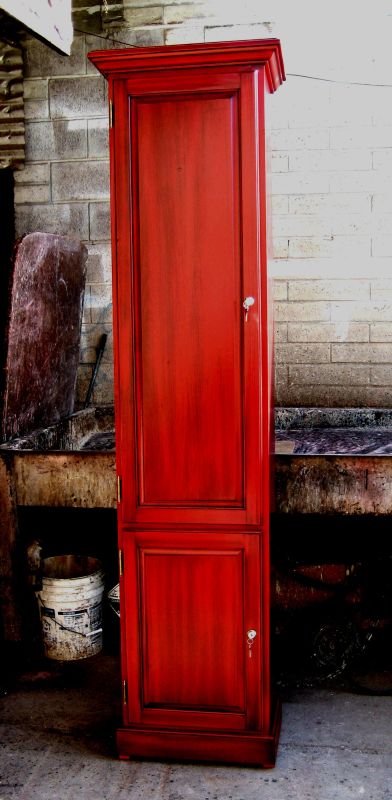Ebonizing a White Oak Table
Grain filler is tricky to use with White Oak, which has pores that are already naturally sealed. October 1, 2010
Question
I am ebonizing (India ink) solid white oak wood table top( 2.5"T x 34"W x 96"). I want to color the pores with a grey "filler" without filling the pores (similar to limed oak). I thought of using tinted filler but wiping with the grain to remove most but it could be risky (after grain raising, staining and seal coat). Any input on best method to color pores without filling?
Forum Responses
(Finishing Forum)
From contributor G:
I think breakaway glaze would work for you. It's easier to wipe off the high spots.
From contributor R:
Have you tried to mix a color into some Naptha (whatever color you want) and brush it on your piece? Once its dry rub it cross grain with a piece of burlap or a ribbed cotton T shirt or even a White Scotch Brite. If the potion has dried to quick to your liking you might dab some Naptha on the rag and continue to rub cross grain. Since you will be applying the color over a sealer coat, itís going to make removing it rather simple.
From contributor M:
I would apply my black stain, seal with a washcoat of 2k urethane sealer and then wipe on a thinned down grey paste filler and remove it using a squeegee or a grout float. The washcoat will allow you to keep the black and the grey clean. Wipe off excess if needed with a rag wrapped around a sanding block. Let the filler dry however long the can says and then spray a full coat of sealer. Miracle glaze or a similar product will work also but I prefer this method.
From contributor M:
White oak has tyloses which gives the wood a closed cellular structure (clogged pores). Since the wood pores are already filled, not sure what the grey filler will accomplish. Tyloses gives white oak the desirable capacity to be used in barrels and casks without leaking.
From contributor Y:
White oak does have tyloses, but they do not completely fill the pores, it just forms cell walls. Some pores will be blocked, but by theory, some of them will be open to the opposite cell wall. Some filler will stick. You might try an experiment to fill the pores first, sand the surface clean, and then stain with a vinegar/rusted steel wool mixture. It'll turn oak black really quickly by chemical reaction with the tanin. I've not tried filling, but use the vinegar/steel wool on white oak bowls and vessels.
From contributor C:
All good advice so far. You want a ceruse ebonized finish, and you have stained and sealed? I like to brass brush the wood first. Glaze with the color of your choice, allow to haze up and wipe clean with 4/0 steel wool. Let it dry overnight and sand 280/320 wipe the dust off/spray finish coats.
